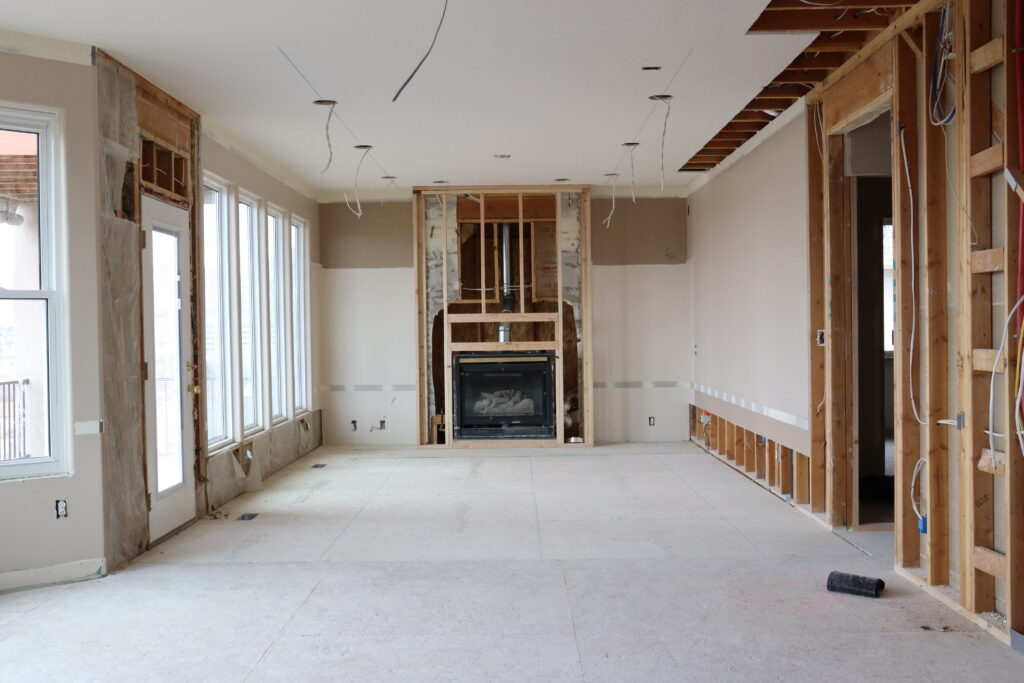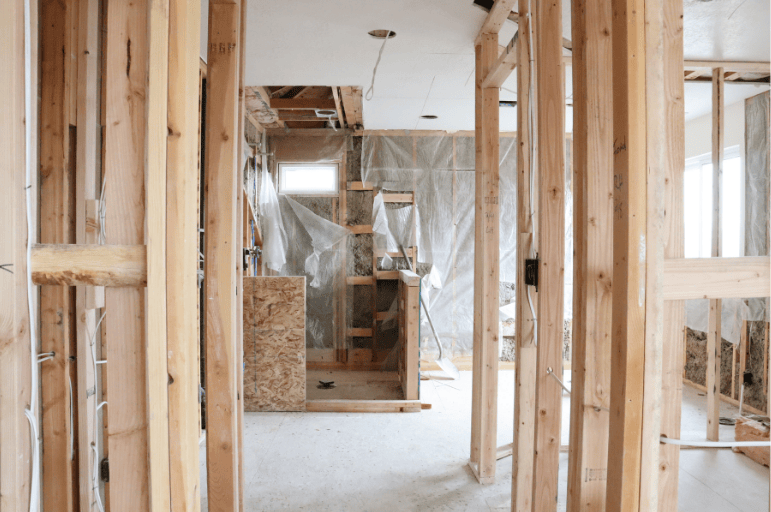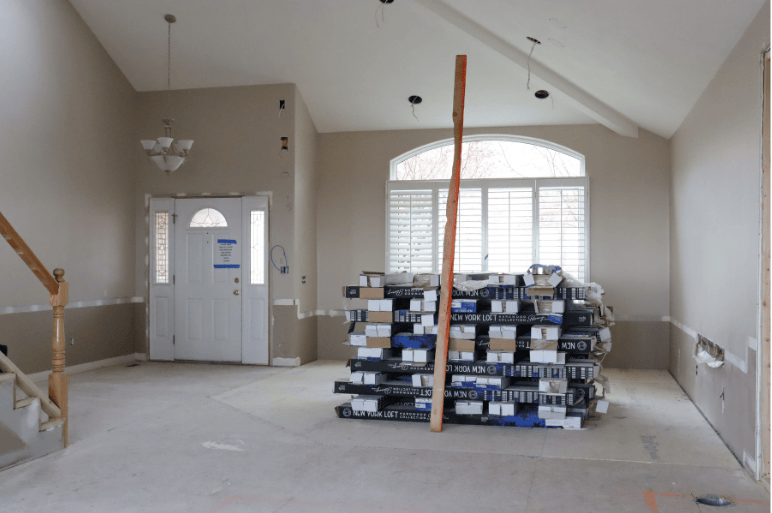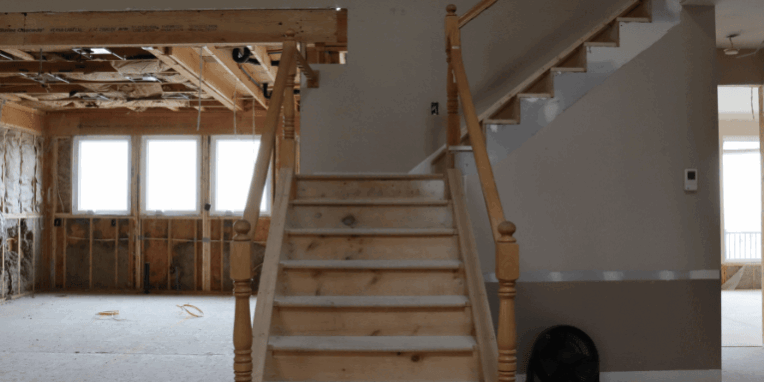1. Why Waterproofing Matters—Especially Here in Utah
Utah’s climate might fool you into thinking basement water problems are rare. After all, we’re not exactly Seattle. But talk to any seasoned homeowner here, and they’ll tell you—moisture issues in basements are a thing. Big time.
Here’s why: Our winters pile on snow, and when that snow starts melting in spring—often right alongside heavy seasonal rains—your home’s drainage system can suddenly go from “handling it fine” to “completely overwhelmed.” Water seeps into the ground faster than it can be carried away, pushing against your foundation walls and floor with what’s called hydrostatic pressure. If your home happens to sit on Utah’s clay-heavy soils, the problem doubles—because clay expands when wet, putting even more force on your basement walls.
This isn’t just about puddles you can mop up. Water damage can quietly sabotage your home’s structure, air quality, and future plans. All it takes is one damp season to ruin your investment—turning that beautifully remodeled basement into a musty, moldy liability. As the experts we can assure you, moisture control isn’t optional here—it’s the first line of defense.
Waterproofing is the foundation—literally and figuratively—for any successful basement upgrade. Without it, fresh paint will bubble and peel, wood framing will swell and rot, carpets will smell like a high school locker room, and mold will spread faster than you can Google “dehumidifier.” If you’re going to finish or remodel your basement, make sure you start with the one thing that protects all the rest.
Let’s make sure your basement is built to stay dry—season after season, storm after storm.
2. The Science of Basement Waterproofing
If you’re wondering what “basement waterproofing” actually involves, here’s the breakdown: preventing water from penetrating your basement by managing it at the source.
Key methods include:
-
Interior Sealants (epoxy, urethane, etc.) to fill cracks and block minor seepage. Check out more info at Wikipedia
-
Interior Drainage Systems that channel water to a sump pump, then eject it safely outside
-
Exterior Waterproofing via membranes, drainage tiles, or excavation to shield the foundation from outside moisture
-
Support Tools like sump pumps (with backup options), vapor barriers, and dehumidifiers to manage moisture and humidity.
Building codes alone require measures to defend against hydrostatic pressure—but for Utah basements, it’s not just code—it’s peace of mind.

3. 8 Signs Your Utah Basement Needs Waterproofing Today
| Sign | What It Tells You |
|---|---|
| 1. Damp, musty smell or mold growth | High humidity; poor air quality |
| 2. Water stains, peeling paint, efflorescence | Clear indicator of moisture intrusion |
| 3. Cracks or bowed walls | Foundation instability or pressure issues |
| 4. Water pooling or seepage | Active leaks—likely from outside |
| 5. Sump pump malfunctions | No backup? You’re vulnerable during storms |
| 6. Window well flooding | Water backs up through low openings in foundations |
| 7. Cold, glazed floors or walls | Condensation turning into prolonged dampness |
| 8. High indoor humidity | HVAC forced to work harder; energy costs up |
If you check even a few of these boxes, waterproofing isn’t optional—it’s a solution you need now.

4. DIY vs. Pro Waterproofing—What Works (And What Doesn’t)
When homeowners first spot a little dampness in the basement, the instinct is often to run to the hardware store, grab some “waterproof” paint, and call it a day. And to be fair—there’s nothing wrong with small, inexpensive fixes for minor moisture problems. Things like regrading soil away from your home, extending your downspouts, or sealing small hairline cracks with epoxy can be weekend projects that actually help.
But here’s the truth: DIY basement waterproofing is almost always a short-term patch, not a long-term solution. It’s like putting a band-aid on a leaky pipe—you might stop the drip for a while, but you’re not addressing the actual water pressure pushing against your foundation.
When DIY Can Work
-
Sealing minor surface cracks with epoxy or urethane
-
Cleaning and maintaining gutters and downspouts
-
Regrading your yard so water flows away from your home
-
Using a portable dehumidifier to manage indoor humidity
These are low-cost, low-risk fixes that can buy you time, but they won’t protect your basement during a heavy Utah spring melt or a summer thunderstorm.
When It’s Time to Call the Pros
Professional waterproofing contractors bring not just better tools, but a bigger-picture approach. Instead of just stopping visible leaks, they locate and solve the root cause—whether it’s hydrostatic pressure, faulty drainage systems, or deteriorating foundation walls.
Pro solutions often include:
-
Interior drainage systems with sump pumps to move water safely away
-
Exterior waterproof membranes to block moisture before it ever touches the foundation
-
French drains to redirect groundwater
-
Comprehensive sealing and crack injection for structural stability
-
Lifetime warranties on many systems, giving you long-term peace of mind
And here’s the other factor—skill. Digging around your foundation, tying into drain systems, or cutting into basement slabs is not something you want to “figure out as you go.” One wrong move and you could compromise your home’s structure or invite even more water in.
The Bottom Line
DIY fixes can help in the short run, but professional waterproofing is the only way to truly protect your basement remodel investment.
 5. Waterproofing Methods: What Works Best and Why
5. Waterproofing Methods: What Works Best and Why
There’s no “one-size-fits-all” when it comes to basement waterproofing in Utah. The right method depends on your home’s age, soil conditions, foundation type, and the specific way water is getting in. In other words—what works perfectly for your neighbor in Sandy might be completely wrong for you in Park City.
Let’s break down the two main categories—interior and exterior—and when each shines.
Interior Waterproofing – Dealing with water after it’s entered
Think of interior waterproofing as the “damage control” strategy. It’s not stopping water from reaching your basement walls—it’s managing it once it’s there so it can’t pool, damage finishes, or grow mold.
Common interior solutions include:
-
Interior sealers (epoxy or urethane) – These fill small cracks in walls or floors, blocking minor seepage and preventing damp spots from spreading. Great for hairline cracks caused by normal settling.
-
Perimeter drain systems – Channels installed along the inside edges of the basement floor that direct water to a sump pump.
-
Sump pump systems (with battery backups) – Your first line of defense when water makes it inside. A pump actively moves water out and away from your foundation.
-
Vapor barriers – Plastic sheeting installed on walls to keep moisture from passing into finished living areas.
-
High-capacity dehumidifiers – Control overall humidity, preventing condensation and discouraging mold growth.
When to use: Interior methods are perfect if you can’t excavate outside (tight lot lines, patios in the way) or if you need an affordable, quick fix. But remember—they don’t stop the water from touching your foundation.
Exterior Waterproofing – Stopping water before it gets inside
Exterior systems address the root cause: groundwater pressing against your foundation. This is the most comprehensive approach and often the longest-lasting.
Common exterior solutions include:
-
Waterproof membranes & coatings – Applied directly to the outside of foundation walls, these act like a raincoat for your basement.
-
Exterior French drains – Perforated pipes surrounded by gravel that collect and divert water away from the home before it reaches your walls.
-
Sodium bentonite slurry – A clay-based material that expands when wet, sealing gaps in soil and masonry without digging up your yard.
-
Foundation crack repairs – Structural fixes that prevent small weaknesses from becoming full leaks.
-
Regrading the yard – Adjusting soil slope so rainwater naturally drains away from your foundation.
When to use: Exterior methods are ideal for new builds, major remodels, or when persistent leaks are caused by high groundwater or hydrostatic pressure. They cost more upfront but can offer decades of protection.
The Best Approach for Utah Homes
In many Utah basements—especially those with clay-rich soil—a hybrid approach works best:
-
Exterior systems to stop water at the source
-
Interior systems to manage unexpected leaks or backup situations
This way, you’re not relying on a single line of defense. You have an exterior “shield” plus an interior “backup plan.”
Pro tip: As The Spruce and Basement Systems, Inc. recommend, always combine waterproofing with good drainage maintenance—clean gutters, extended downspouts, and proper grading. Skipping the basics will shorten the life of even the best waterproofing system.

6. Investing in Waterproofing: Costs vs. Benefits
Typical cost range: $3,000–$7,000, averaging around $5,000–$5,500 depending on basement size and method
Salt Lake City Benchmark: $1,460–$1,554 for basic waterproofing—including labor and materials—for smaller basements (~200 sq ft)
ROI: Expect about a 30% return when selling your house—waterproofing is both preventative and value-adding
Additional financial perks:
-
Lower energy bills thanks to reduced humidity and better insulation—up to a 25% reduction
-
Fewer future repairs and mold remediation (which can cost thousands)
-
Improved air quality and healthier living spaces
-
Boosted home equity—dry basements attract buyers and hold value better
7. Preparing for Your Basement Waterproofing Project (Utah Style)
Best timing: Mid to late summer—dry soil and weather make excavation and sealant application smoother
Homeowner prep checklist:
-
Clear the basement area for easy access and safety
-
Consult and compare quotes, ask about local references in Salt Lake, Provo, Park City
-
Demand written estimates with detailed scopes, system warranties, and timelines
-
Plan for disruptions like digging, noise, or temporary dehumidification
With this level of preparation, you’ll be confident and informed when the contractor shows up.
Utah Basement Waterproofing FAQs
Q: How long does basement waterproofing last?
A professionally installed waterproofing system can last decades—often the life of the home—if maintained properly. Many Utah contractors, offer transferable lifetime warranties on certain systems.
Q: Does waterproofing increase home value?
Yes. A dry, mold-free basement is a major selling point for buyers. It also helps your home pass inspections more easily, leading to faster sales and better offers.Waterproofing can deliver an ROI of up to 30% when selling.
Q: Should I waterproof before or after finishing my basement?
Always waterproof before finishing. skipping this step can result in costly tear-outs if water problems develop later—ruining flooring, drywall, and insulationS
Q: What’s the best time of year to waterproof a basement in Utah?
Summer and early fall are ideal—soil is drier, weather is more predictable, and work can move quickly. However, urgent leaks can be handled year-round with the right solutions.
Q: Will insurance cover basement waterproofing?
Typically no. Insurance generally covers sudden water damage (like burst pipes) but not preventive work. Waterproofing is considered a home improvement investment rather than a reimbursable repair.
Q: How do I know if the problem is outside water or indoor humidity?
A moisture test can confirm it. If moisture appears seasonally or after storms, it’s likely exterior water intrusion. If it’s consistent year-round or tied to daily activities, humidity control may be the first step.
Q: Can I waterproof my basement from the inside only?
Yes—interior systems can be very effective, especially when exterior excavation isn’t possible. But for long-term protection against hydrostatic pressure, combining interior and exterior solutions when feasible.
Q: What’s the difference between damp proofing and waterproofing?
Damp proofing is a basic moisture barrier, usually applied during construction, that resists soil moisture. Waterproofing actively stops liquid water under pressure, offering a much stronger defense.
Q: How much disruption should I expect during installation?
For interior systems, expect some noise, dust, and a few days of work. Exterior systems may require excavation, which can temporarily affect landscaping and access to certain parts of your property.
Q: How much does it cost in Utah?
Small jobs can start around $1,500, while full waterproofing systems with drainage, sump pumps, and sealing can range from $3,000 to $7,000.
Q: Is waterproofing worth it?
Absolutely. Beyond the potential 30% ROI when selling your home, waterproofing saves you from costly repairs, improves energy efficiency, and creates a healthier living space
Q: Do I need both interior and exterior waterproofing?
If your home experiences high hydrostatic pressure or recurring water issues. A combined approach offers the most robust, long-term protection.
Q: Can I DIY basement waterproofing?
Minor projects like regrading the yard, cleaning gutters, or applying sealants to small cracks can be DIY. But full waterproofing—especially when it involves drainage systems or foundation repairs—should be left to trained professionals.
Q: What’s the best warranty or guarantee?
Look for a transferable lifetime warranty from a reputable local provider. This “gold standard” adds confidence for you now and resale value later.
Take Action Today—Before Water Takes Over Tomorrow
To wrap it up: Basement waterproofing isn’t just a home project—it’s insurance. It protects the health of your foundation, preserves the air you breathe, powers up energy savings, and ensures your remodel actually lasts.
Final Thoughts
A dry basement isn’t just a “nice-to-have” in Utah—it’s a non-negotiable. Between our snow-packed winters, unpredictable spring downpours, and soil that loves to swell when wet, your basement is always under pressure—literally. Waterproofing isn’t just about stopping leaks; it’s about protecting your home’s structure, your air quality, and every dollar you’ve put into making that space livable. Whether you’re dreaming of a home theater, a guest suite, or just a safe place for storage, it all starts with keeping water out. The good news? When you tackle waterproofing now, you’re not just preventing problems—you’re buying yourself peace of mind for decades. And that’s an investment every Utah homeowner can feel good about.
🎁 LIMITED-TIME OFFER
SCHEDULE YOUR UTAH BASEMENT FINISHING PROJECT WITH US AND RECEIVE A
FREE 65” WALL-MOUNTED TV
SIGN BEFORE CHRISTMAS 2025 TO CLAIM YOURS!
*Offer valid for new basement finishing contracts signed before December 25, 2025. Cannot be combined with other promotions. One TV per household.
Protect your basement—and your investment.
Contact Pro-Worx Construction today for your free, zero-obligation waterproofing inspection. We fix the leaks and build your future basement right.
If you want additional details on our expertise in basement finishings check it out here








